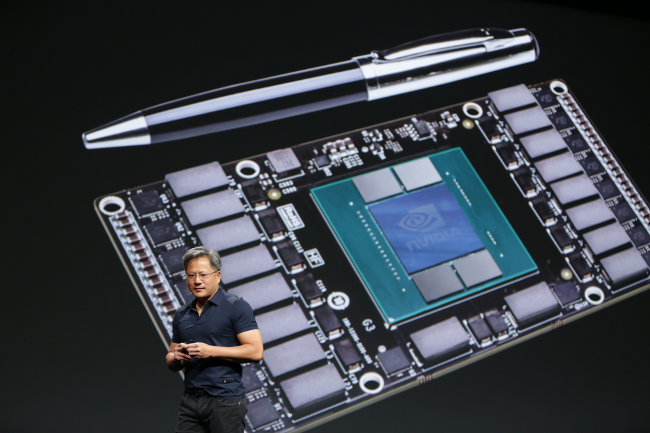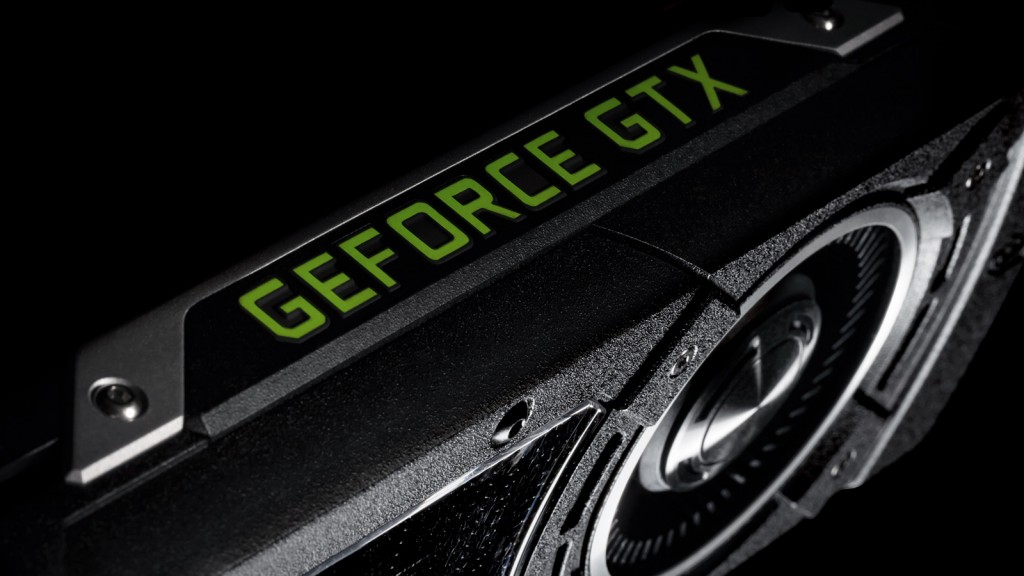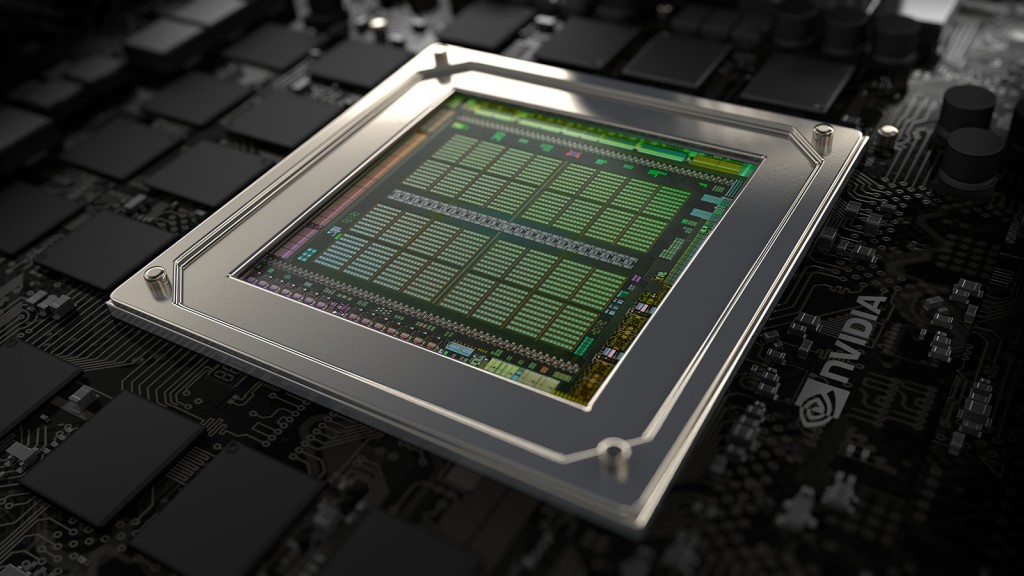Chief executive officer of Nvidia Corp. this week said that the company is designing a broad lineup of solutions for different applications powered by its next-generation “Pascal” graphics processor architecture and other technologies from the company. Jen-Hsun Huang seems to be impressed about the prospects of products that are in the company’s pipeline, but he naturally reveals no details. The CEO advices to “wait a little longer” to find out more about them.
“I cannot wait to tell you about the products that we have in the pipeline,” said Jen-Hsun Huang, chief executive officer of Nvidia, at the company’s quarterly conference call with investors and financial analysts. “There are more engineers at Nvidia building the future of GPUs than just about anywhere else in the world. We are singularly focused on visual computing, as you guys know.”
In fact, Nvidia’s “Pascal” graphics processing architecture is ought to be impressive and there are many reasons why the chief exec of Nvidia is excited about it. Thanks to major architectural enhancements, the company’s next-gen GPUs will support numerous new features introduced by DirectX 12, Vulkan and OpenCL application programming interfaces. Moreover, having more GPU engineers than any other company in the world, Nvidia will probably add a lot of exclusive capabilities to future GPUs.
The upcoming PK100 and PK104 graphics processing units will not only feature major architectural innovations, but they will also be made using either 14nm or 16nm manufacturing technology with fin-shaped field-effect transistors (FinFETs). “Pascal” GPUs will be the first graphics chips from Nvidia to be made using an all-new process technology since “Kepler” in 2012. Finer fabrication process is something that should permit Nvidia engineers to considerably increase the number of stream processors and other units inside the company’s future GPUs, dramatically increasing their performance.
In addition, next-generation graphics processing units from Nvidia will support second-generation stacked high-bandwidth memory (HBM2). The HBM2 will let Nvidia and its partners build graphics cards with up to 32GB of onboard memory and 820GB/s – 1TB/s bandwidth. Performance of such graphics adapters in ultra-high-definition (UHD) resolutions like 4K (3840*2160, 4096*2160) and 5K (5120*2880) should be extremely high.
For supercomputers, the “Big Pascal” chip will integrate NVLink interconnection tech with 80GB/s or higher bandwidth, which will significantly increase performance of “Pascal”-based Tesla accelerators in high-performance computing (HPC) applications. Moreover, NVLink could bring major improvements to multi-GPU technologies thanks to increased bandwidth for inter-GPU communications.
Graphics and compute cards based on “Pascal” will offer breakthrough performance, but the new architecture will be used not only for gaming and HPC markets. Nvidia will use its “Pascal” technology for a variety of solutions, including those for mobile and automotive applications.
“We have found over the years to be able to focus on just one thing, which is visual computing, and be able to leverage that one thing across PC, cloud, and mobile, and be able to address four very large markets with that one thing: gaming, enterprise, cloud, and automotive,” said Mr. Huang. “We can do this one thing and now be able to enjoy all and deliver the capabilities to the market in all three major computing platforms, and gain four vertical markets that are quite frankly very exciting.”
While the chief exec of Nvidia is eager to reveal that his company’s next-generation GPU architecture will be big and will span from GeForce to Quadro Tesla and Tegra, bringing unique set of benefits to every platform and market, there are many things he will not elaborate on. The exact details and launch timeframes.
“I cannot wait to tell you all about it, you are just going to have to wait just a little longer,” teased Mr. Huang.
Discuss on our Facebook page, HERE.
KitGuru Says: Without any doubts, future graphics and multimedia processors based on the “Pascal” architecture will be able to offer dramatically higher performance compared to existing GPUs and SoCs, which will help to extend usage models of such chips. The main question that market observers, gamers and PC enthusiasts have these days is simple: when does Nvidia plan to release its first “Pascal”-based products.
 KitGuru KitGuru.net – Tech News | Hardware News | Hardware Reviews | IOS | Mobile | Gaming | Graphics Cards
KitGuru KitGuru.net – Tech News | Hardware News | Hardware Reviews | IOS | Mobile | Gaming | Graphics Cards






Oh good, Because I’ve been waiting a good couple of years for Pascal. Stuck with my GTX660 until that tasty GTX1080 comes out
You will probably have to wait for next year
Everything is good with Nvidia, just the price.
I’m estiamting maybe summer 2016ish anyway but considering its the first real 4K generation graphics card with such a big jump in specs I dont think i’d mind a couple of delays
~£250 for a 970 isn’t good?
More engineers doesn’t necessarily mean a better design, it could easily mean too much in house fighting/arguments making the design worse than ever before. However I have high hopes anyway because 4k isn’t really achievable on current cards.. and if 4k isn’t practical then 1440p rift isn’t practical.
Feck, upgrade to R9 390X, or wait till next year? 🙁 My 580 has pretty much died now…
970 is the only appropriately-priced high-end card, I’m afraid.
“Can’t wait to tell you about future ‘Pascal’ products”
Just when AMD is about to launch its whole new line-up. How convenient of you, Jen-Hsun Huang!
I think a 390x might do the trick also not to mention a 17 teraflops 395x with dx12 will last you a good stretch of time like the 295x 🙂
❋✦✧❋✦✧start freelancing at Home with Google Finance@nr7:::
,
➨➨➨➨https://BestHome-Jobs5Cr0wd.com/work/care…
It was an earnings report… Did you expect him to say ‘300 series is launching, no further comments’?
The other problem with pascal is I need it NOW! 😉
He sounds like Paul Moller, I can’t wait to show you our flying car in 2003 they had hover flight test, 2015 still waiting. lol
highend? They’re not much faster than 780’s, which weren’t even the top dog 2 years ago. It’s a mid-ranged card that’s priced like a midranged card.
quote: “ultra-high-definition (UHD) resolutions like 4K (3840*2160, 4096*2160)”
what the hell?! UHD and 4K are not the same!
UHD: 3840×2160 – CEA standard
4K: 4096×2160 – DCI standard
Do people still believe what comez out of this guys mounth?
Any thoughts from the Jen-Hsun Huang Fans? I’m really intrested in your opinion.
Still appropriately priced then isn’t it :L
Ye ye we all know.
Now let people pronounce the mainstream resolution without waiting for half an hour.
4K is simpler.
Screw the DCI standard! Nobody cares about the DCI one.
970? Mid-range? Top kek, fucking idiot.
hm..same problem here… but I will take Fiji…coz I am waiting 4 years for new gpu architecture. And Pascal will be maybe in summer 2016… real date might by end of 2016… waiting make no sense
“Many manufacturers may advertise their products as UHD 4K, or simply 4K, when the term 4K is traditionally reserved for the cinematic, DCI resolution.[3][4] This often causes great confusion among consumers.”
FYI, the term “decimate” had a specific meaning many years ago (look it up) but that meaning has changed. Dictionaries get updated to reflect the common usage even if it’s been applied incorrectly.
Pascal ~ I am waiting for you! Titan X for now….
GTX 660 is an excellent card even today. Upgrading to a GTX1080 is a good progression rate. Not too fast. 1080p is still a very good monitor. 2k is getting more mainstream but 4k will be coming on strong in 2016. Start saving now. PS. I own a 570, 660, 660SC, 750 ti, 960, 780. My favorite is by far the 750 ti. Most bang for the buck and seems to play smoother than the other cards except the 780. I will upgrade my 780 to a GTX1080 but i have been at 2560x1440p since 2013. Next monitor will be a IPS 4K at 144hz w/gsync (2018?)
Forget about 4K, just make a GPU that can run games on highest settings, at 144fps and 2.5k resolution.
if u ever gonna do a giveaway one of your cards do alert me 😛 i have 560 ti currently which by far the best i could have for my i3 2100
ITT: Radeon Fanboys dripping at the mouth with the crappy R9 390X refresh.
Whut.
Assuming the rift is using two 1440p screens
How does any of this move us closer to abandoning rasterization in place of full real time 4k ray tracing? How far are we away from Hollywood level affects in games? Is this still 20 years away ?
Until the day you can’t tell the difference between a game scene and a film at 4k, all this is still boring me.